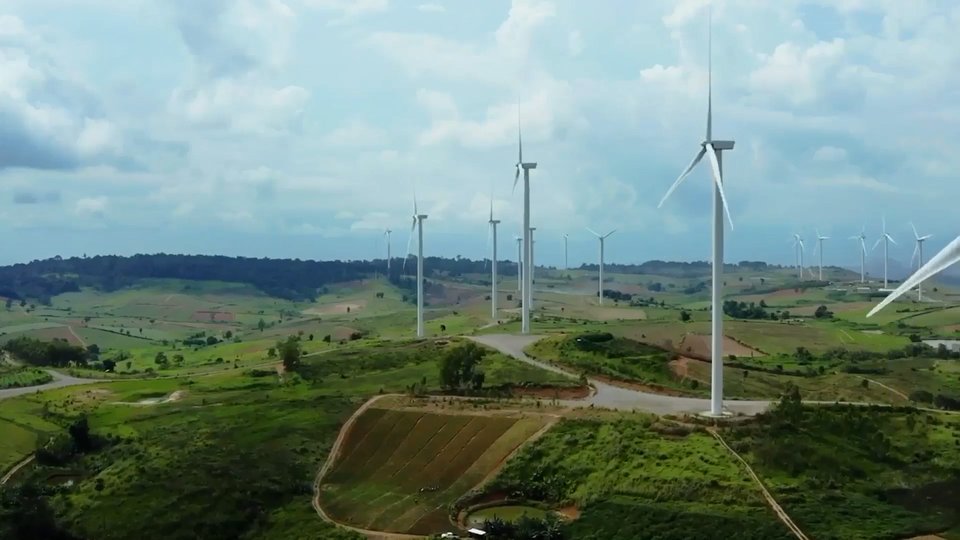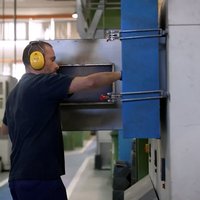The dangers of nitrates
In recent years we have seen the waters of our beaches dressed in green, due to the significant increase in the level of the amount of algae. And the algae damage the coastal environment. According to experts, this proliferation is due to pollution, the abundance of nitrates and phosphorus that has accumulated in seawater.
Some of the reasons for the increase in nitrates include the use of nitrogen fertilisers and inadequate management of animal feed on farms. In some places, however, the search for solutions to this problem has begun.
Clean sand, blue water and bright sun. The beach is the place where millions of people choose to spend their holidays.
This is usually so, it can’t be when the beaches are covered with green mud. In fact, these algae damage the marine environment and are very unpleasant to swim in.
Brittany is located in the west of France and has one of the most beautiful beaches in the European Union. But from time to time, it is covered with the so-called green algae tide.
PIERRE AUROSSEAU; Scientific Council of the Environment of Brittany: I'm standing next to these algae because they're still fresh and haven't rotted. Ulva amoricana is an alga that lives in Brittany. The problem is that it spreads a lot on some beaches, which is not usually the case. The algae are fertilized by nitrogen nitrates that arrive from the rivers.
Animal farms are one of the creators of green tides. Algae are fed with nitrates, a component found in commercial fertilizers and animal manure.
In moderation, nitrates are beneficial. Plants, for example, are necessary for life. When they grow, they take nitrates from the soil; and when they die, they return them back to the soil.
The animals do the same. Defecate, and when the manure breaks down, the nitrates return to the soil.
The problem arises when the amount of nitrate is high. The intensive livestock methods used in Brittany overload the soil with nitrates. When this happens, nitrates that are not absorbed by plants flow into streams, lakes, rivers and, in some cases, into the sea, resulting in green seaweed tides.
In this nursery in Brittany, instead of growing pigs on floors made of concrete, they are placed under straw. This reduces the amount of feces and poultry accumulated in the animals.
THIERRY THOMAS; Pig farmer: To make the subs, we use the straw that we produce in the nursery. Pigs usually have this litter on which they make their needs; they produce compost instead of the mixture that is found in traditional concrete floors.
Nitrates decompose more slowly in compost than in liquid manure. This reduces the risk of excessive nitrates flowing into the water stream.
One of the best ways to reduce the amount of nitrates is to reduce the number of animals, but this is difficult in regions that live on livestock. However, some experts say that this idea should be taken into account.
PIERRE AUROSSEAU; Scientific Council of the Environment of Brittany: Although we are talking about a reduction in the number of livestock, you must understand that this will not mean the end of livestock farming in Brittany. The reduction would be small and, although it would harm the community, the regional economy would solve the problem.
The Odense fjord in Denmark has also been affected by nitrate pollution and green tides. In fact, they have affected the quality of its water, the fish population and the rest of the fauna. But environmental researchers and ranchers work together to tackle this problem.
NIKOLAJ HOLMBOE, Marine Biologist, Danish Nature Agency: We are studying the quality of underwater vegetation. Specifically, we are looking at the amount of marine grassland, which is an indicator of good water quality. We are studying how the sea grass extends into the fjord and the depth to which it extends.
In the ongoing work in the Danish fjord, the quality of the water is investigated and the fauna of the site is studied. Once again the tourists have the opportunity to enjoy this beautiful place.
The work to improve water quality began in the interior of the country. The areas formerly used for intensive livestock farming have been transformed by the authorities into wetlands that take care of the environment.
VIVEKE LINDERBERG; Project Manager, Danish Nature Agency: The land around the Silke A River is used for cultivation. Now we have created wetlands in the river valley. We have changed the course of the river and raised the ground level. Along with that, we have also raised the level of groundwater. In this way, we have created fields of water and the earth is drier.
The wetlands project has been a success. Local breeders have come together from the beginning and have agreed to carry out sustainable activities.
CHRISTIAN PILEGARD HANSEN; Cattle rancher: Cattle ranchers must think they're being heard. If people think they don’t listen, they won’t join this kind of project.
In some agricultural areas of Catalonia, the number of pigs doubles the population. About 150 livestock farmers around the city of Juneda have joined forces to create a company dedicated to the cultivation of pork manure. It produces dry fertilizer, which is exported out of the region. Red from Spain
It also generates energy to sell to the electric.
As in Denmark, the ranchers have been involved in this project from the beginning, which is why the plant has been successful.
MÒNICA JIMÉNEZ DELGADO; Agricultural engineering: This facility is being used to create a common approach to pig manure management. The centralization of the manure reduces the expenses of the cattle ranchers and allows a better execution of the livestock activities carried out in the region. They don’t handle the problem alone, they use a common approach.
Thanks to these and similar methods that we have seen, the amount of nitrate in European waters is decreasing. However, we still have a long way to go until we can improve the water quality of the entire continent.
Buletina
Bidali zure helbide elektronikoa eta jaso asteroko buletina zure sarrera-ontzian










